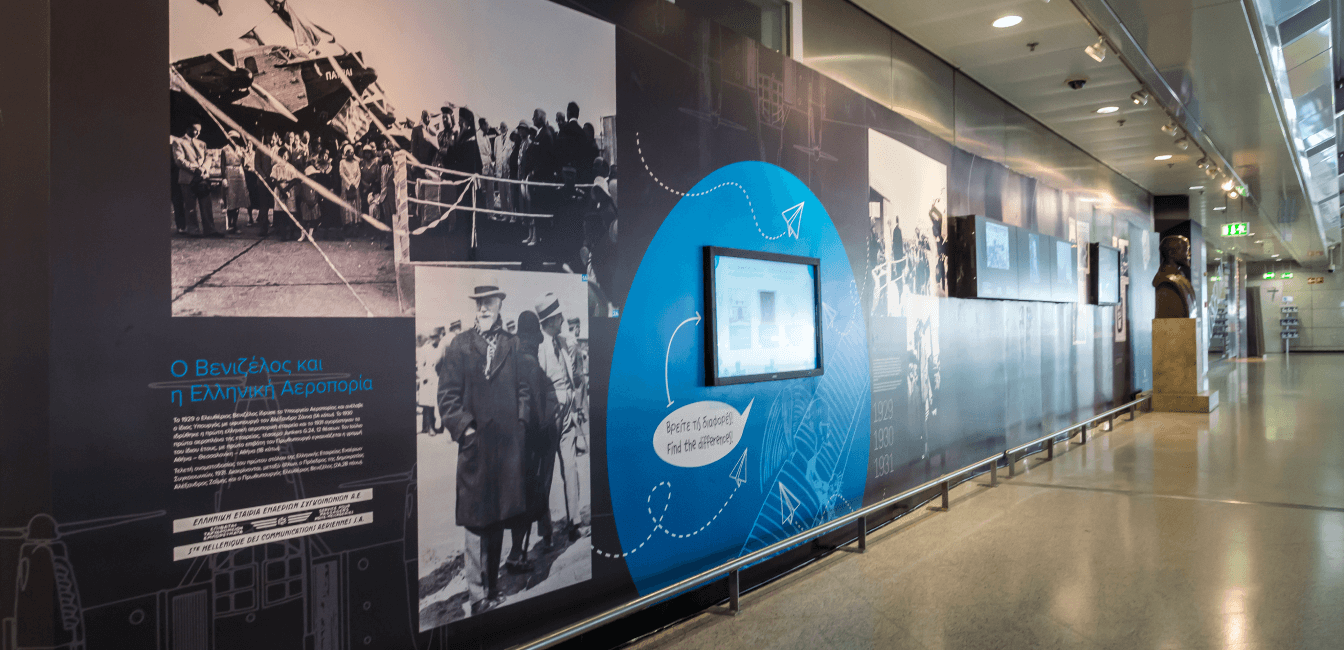A permanent exhibition titled “Eleftherios Venizelos at Athens International Airport” is on display on the 2nd floor of the Main Terminal Building in Eleftherios Venizelos Airport. This ongoing exhibition is presented jointly by Athens International Airport and the National Research Foundation “Eleftherios K. Venizelos.”
The exhibition uses multimedia and interactive formats to tell the story of Eleftherios Venizelos’ pivotal contributions to modern Greece, especially in establishing the Ministry of Aviation in 1929. Visitors learn about his role in shaping the country’s aviation sector and other national initiatives.
By placing the exhibition in the airport terminal, the curators align the content with context: many visitors passing through are travelers themselves, making the themes of aviation, national identity, and modern infrastructure resonate more directly.
The exhibit includes interactive elements, and also offers virtual access via a 3D virtual tour — enabling both on-site visitors and remote audiences to engage with the historical material.
Displayed items include historical documents, images, artifacts related to aviation history, and archival materials, curated to present both factual and visual narratives. These help visitors understand not just biography, but how infrastructure, policy, and movement intersect in national history.
Given its permanent status, this exhibition is a steady cultural anchor within the airport, complementing temporary art shows, installations, and seasonal exhibitions in the same public infrastructure. It serves both informational and symbolic roles.
For visitors with interest in aviation history, modern nation building, and heritage, the exhibition offers educational depth and contextual richness. For those managing exhibition spaces, it’s a case study in long-term curation, sustaining relevance, balancing archival content and visitor engagement.
Exhibition Globe sees this permanent exhibition as representative of how airports and infrastructure can embody cultural memory — not just functional spaces but also sites of storytelling, national identity, and public education.







